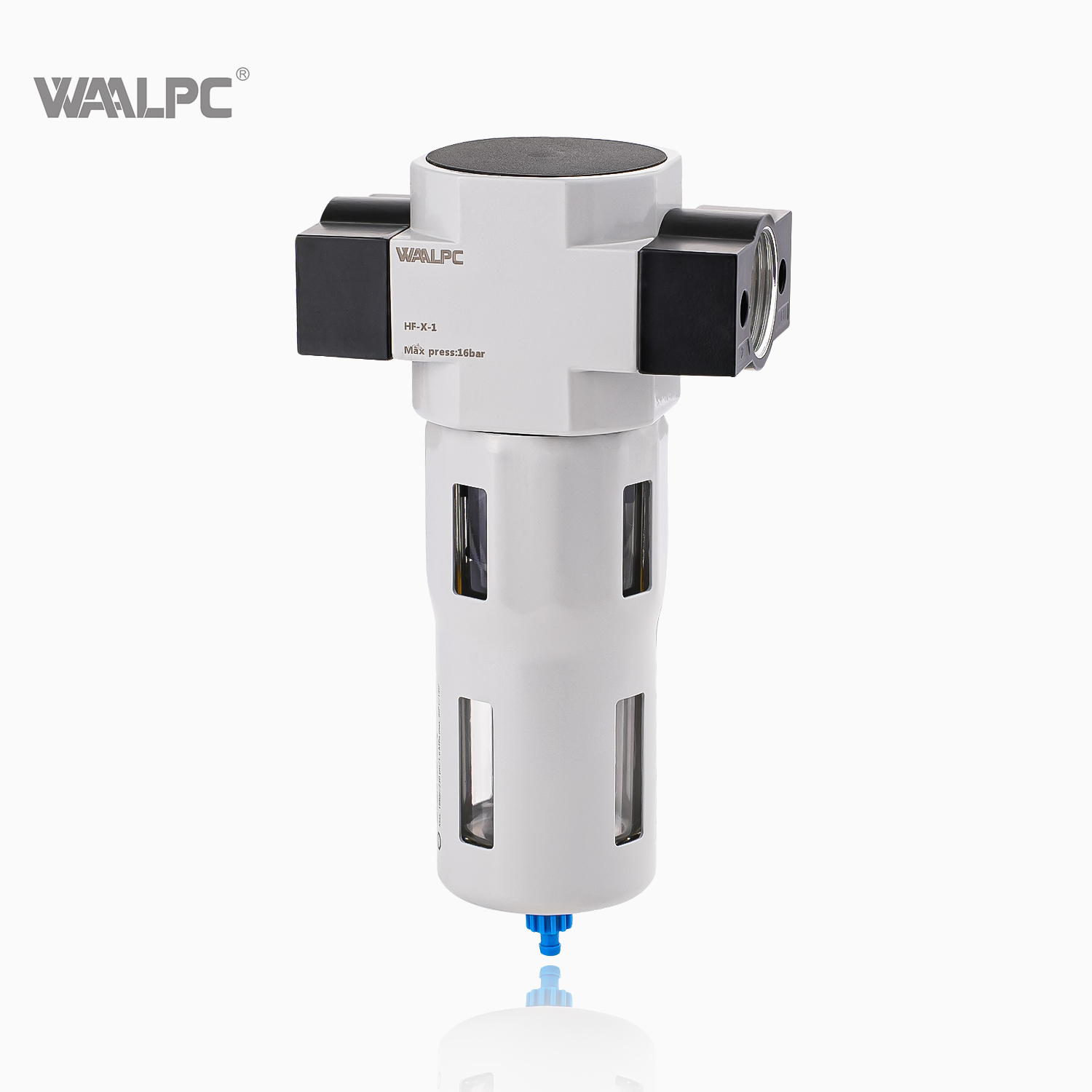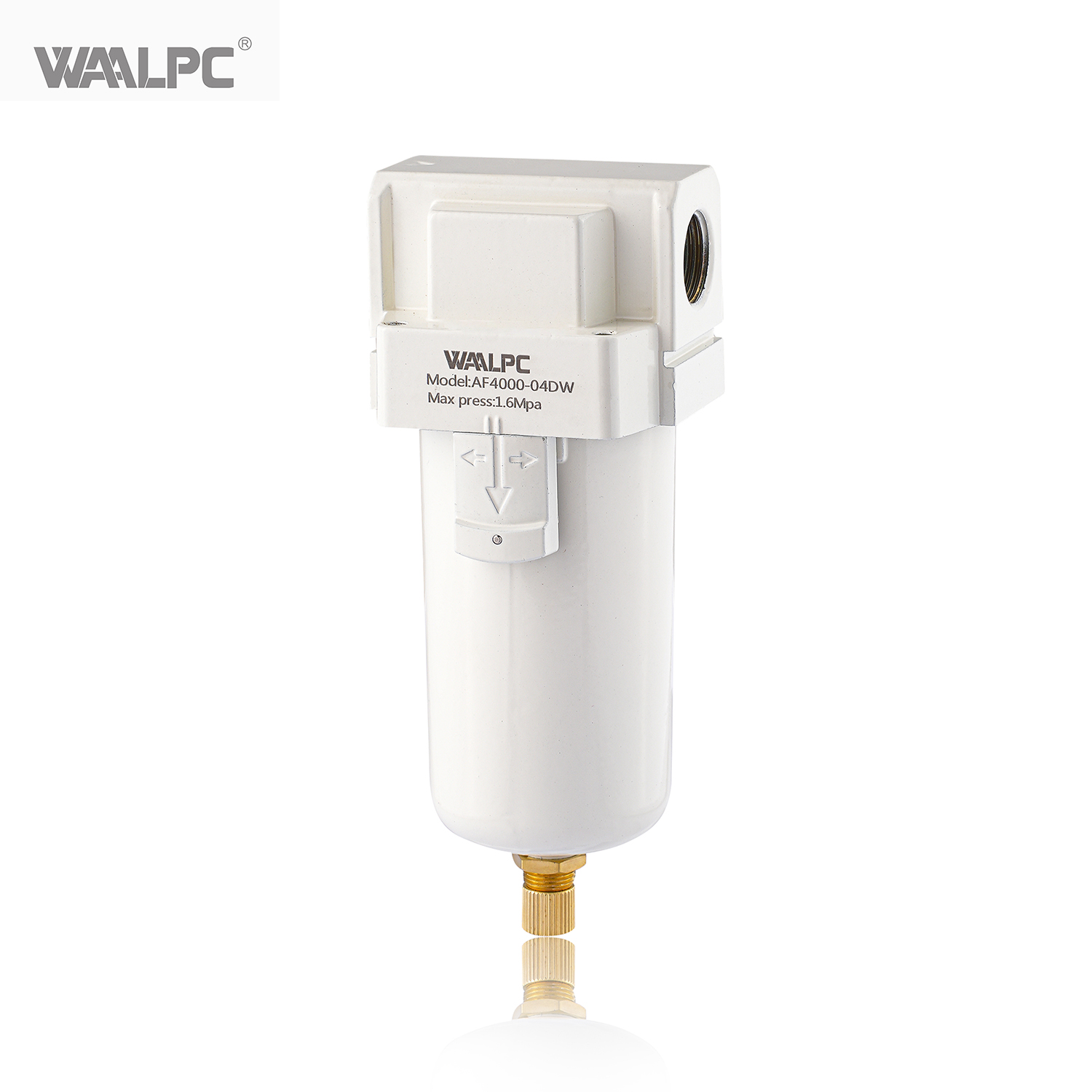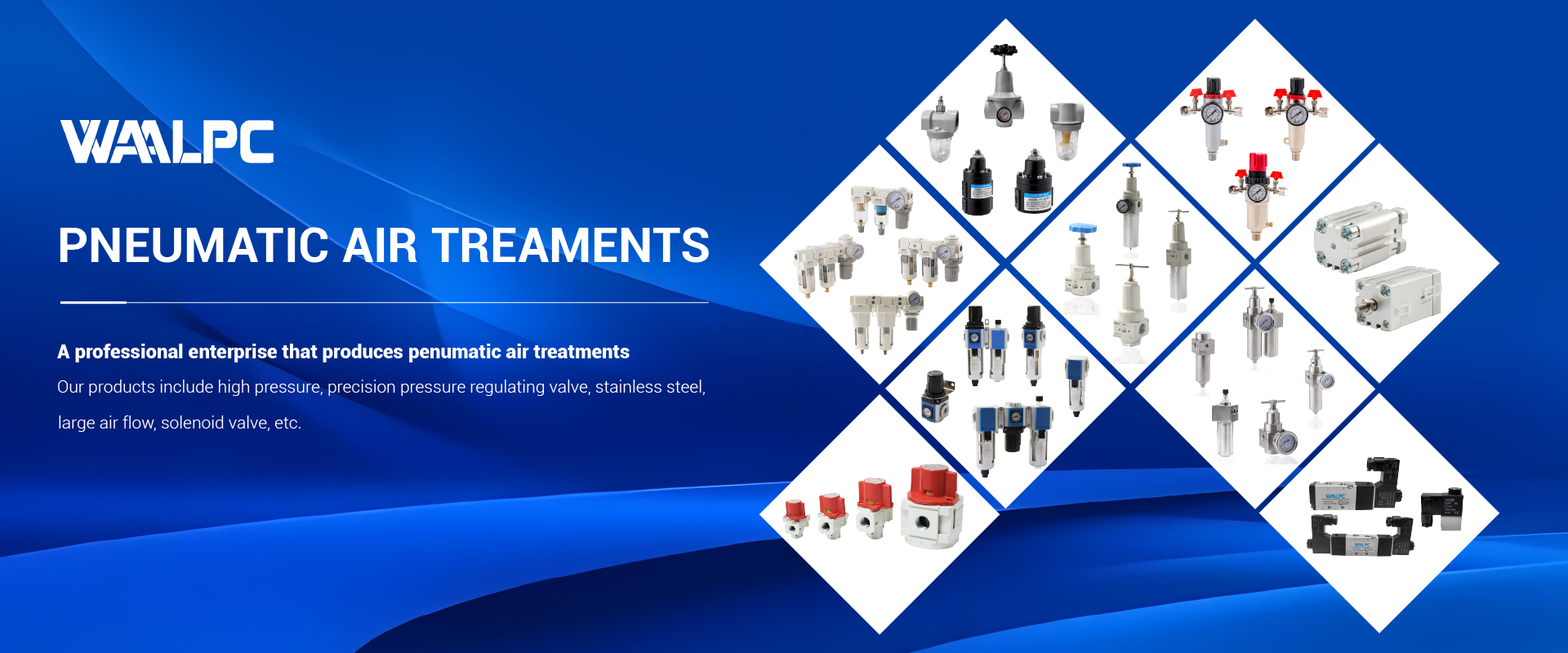Views: 0 Author: Site Editor Publish Time: 2025-05-22 Origin: Site
Contaminant Removal: Filters eliminate particles as small as 0.01 microns and reduce oil content to as low as 0.003 mg/m³, protecting sensitive components like valves, cylinders, and actuators from wear and damage.
Moisture Control: By separating condensed water, filters prevent corrosion in pipelines and equipment, especially in humid environments.
System Protection: Clean air minimizes downtime, extends equipment lifespan, and enhances overall system efficiency.



Cyclonic Separation:
Compressed air enters tangentially, creating a vortex that centrifugally separates large particles (5–45 μm) and liquid droplets, which settle into a collection chamber.
Mechanical Filtration:
The air then passes through a coarse filter (e.g., wire mesh) and a fine filter cartridge (e.g., polyurethane foam or composite fibers), trapping smaller particles (down to 0.01 μm).
Adsorption (Optional):
Advanced models use activated carbon cartridges to remove oil vapors, odors, and hydrocarbons, critical for industries like food and pharmaceuticals.
Automatic Drainage:
A built-in drain valve (manual or automatic) expels accumulated liquids, preventing recontamination.
Coarse Filters: Remove particles ≥5 μm, ideal for general industrial use.
Medium Filters: Capture particles ≥1 μm, suitable for machinery requiring moderate cleanliness.
High-Efficiency Filters: Filter particles ≥0.01 μm, essential for precision applications like electronics manufacturing.
Activated Carbon Filters: Target oil vapors and organic compounds, common in medical and food processing.
In-Line Filters: Compact and easy to install, suitable for space-constrained systems.
Modular Filters: Integrate with regulators and lubricators (e.g., pneumatic "FRL" units) for comprehensive air treatment.
Self-Cleaning Filters: Use backflushing to remove trapped particles without manual intervention, reducing maintenance.
Oil Removal Filters: Critical for oil-lubricated compressors, ensuring oil-free air for sensitive processes.
Coalescing Filters: Efficiently separate liquid aerosols, widely used in paint spraying and chemical industries.
Stainless Steel Filters: Resistant to corrosion, suitable for harsh environments like marine or pharmaceutical settings.
Manufacturing: Protects CNC machines, robotic arms, and assembly lines from contamination.
Food & Beverage: Ensures compliance with ISO 8573-1 Class 1 standards for oil and particle-free air in packaging and processing.
Medical: Provides sterile air for ventilators, dental equipment, and cleanroom environments.
Automotive: Safeguards paint shops, brake systems, and engine testing equipment.
Energy: Enhances the reliability of gas turbines, compressors, and power generation systems.

Regular Inspection: Check for clogged filters, leaks, or drainage issues. A pressure drop ≥0.5 bar indicates a need for replacement.
Filter Replacement: Replace cartridges according to manufacturer guidelines (typically every 6–12 months or based on usage).
Drainage Checks: Ensure automatic drains function properly; manually drain filters in low-usage systems.
Lubrication: For FRL units, maintain oil levels in mist lubricators to ensure optimal performance.
ISO 8573-1:2017: Defines air purity classes for particles, moisture, and oil content. For example, Class 1-2-2 specifies ≤0.1 mg/m³ particles, ≤1.0 mg/m³ moisture, and ≤0.01 mg/m³ oil.
ASME BPVC: Sets guidelines for pressure vessel design and safety in filter construction.
FDA/USP Class VI: Required for filters used in pharmaceutical and food-grade applications.
Smart Filters: Equipped with electronic sensors to monitor pressure drop and send alerts for maintenance.
Energy-Efficient Designs: Low-pressure-drop filters reduce energy consumption in compressed air systems.
Sustainable Materials: Biodegradable filter media and recyclable housings align with eco-friendly practices.
By integrating air source filters into pneumatic systems, industries achieve higher productivity, reduced downtime, and compliance with strict quality standards. Proper selection, installation, and maintenance are key to maximizing their benefits.
For customized solutions or technical specifications, consult us!
